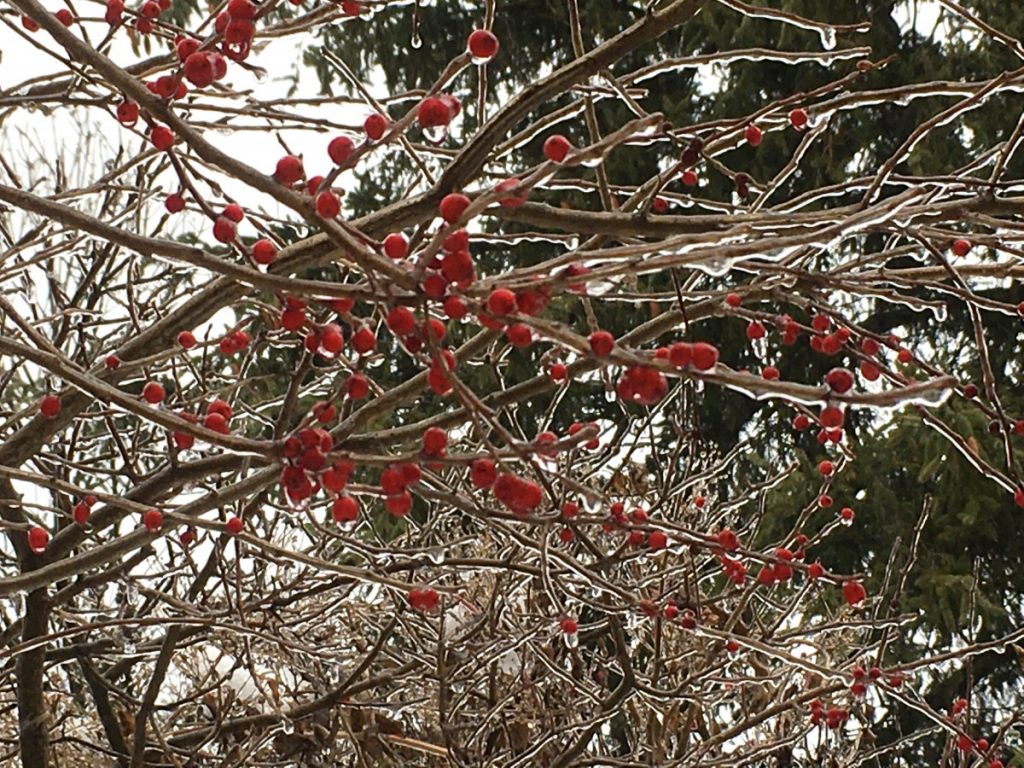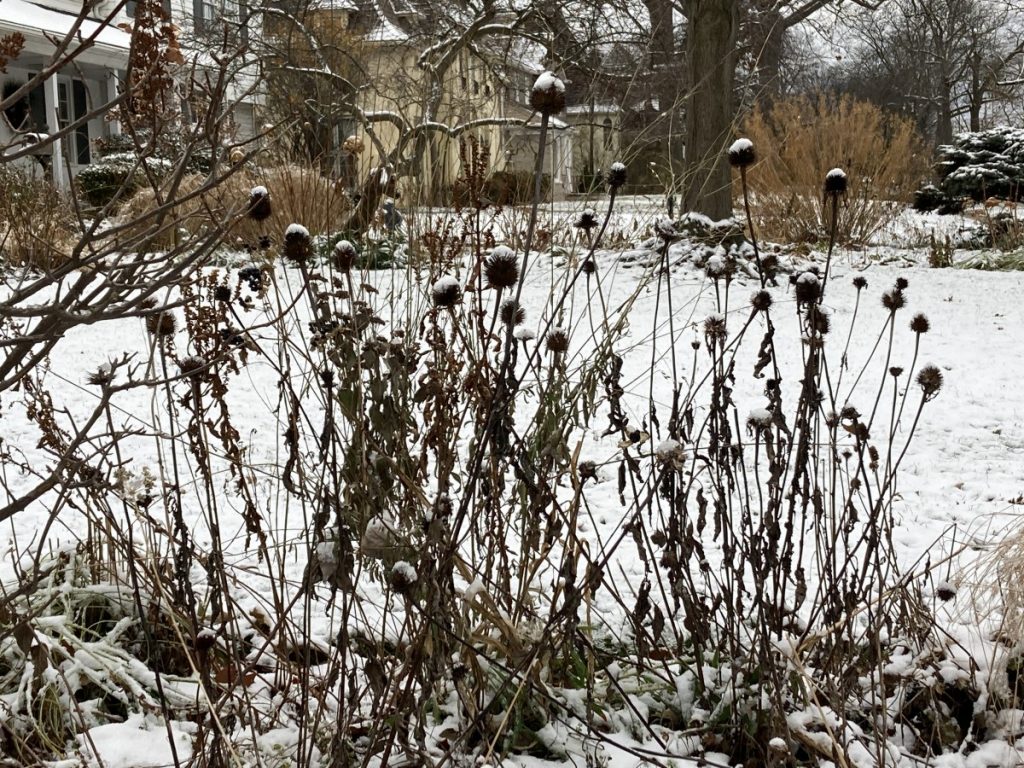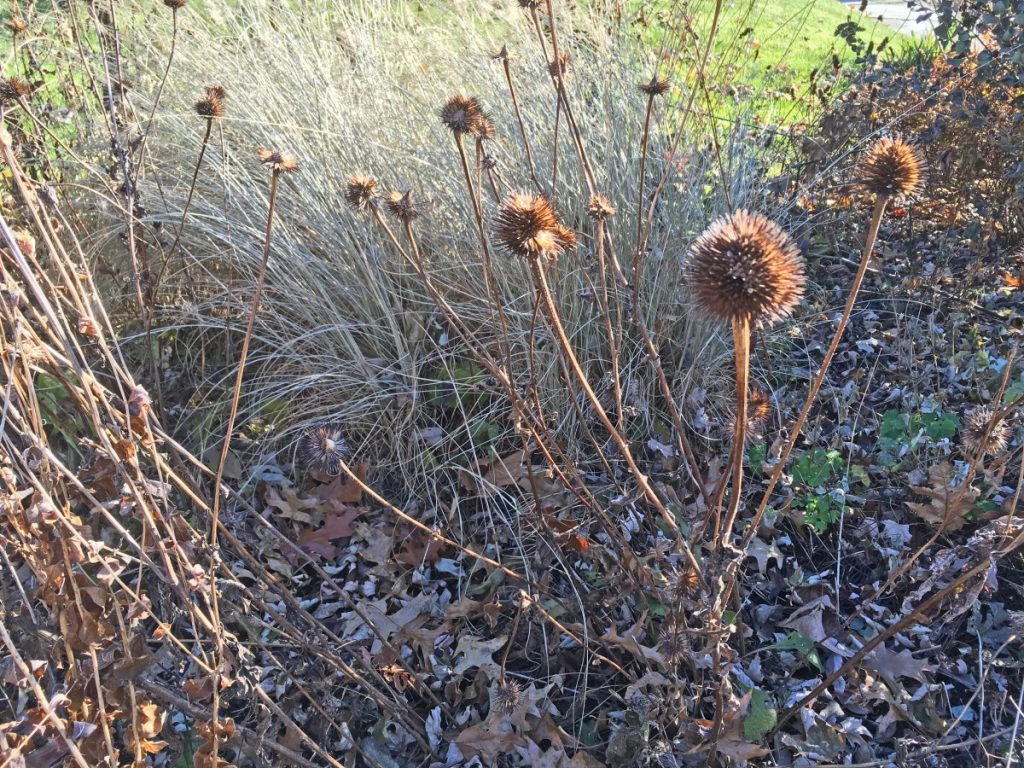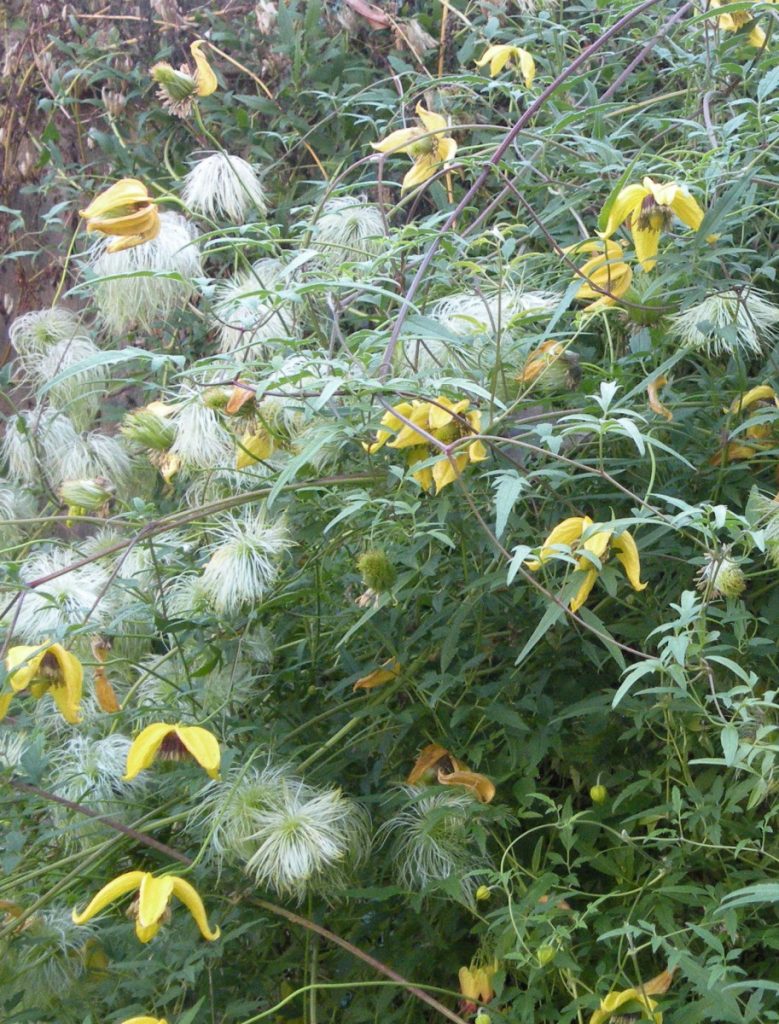Every garden needs a bonus or two or three or more and it’s easy to do. Just include perennials and shrubs that have interesting seedheads, otherwise known as deadheads (we could call them The Grateful Dead).
In the middle of November, some perennials and sub-shrubs were still blooming in my garden and the bright red berries of Ilex verticillata gladdened my spirits.

The berries of Ilex verticillata ‘Winter Red’ will last most of the winter, even if encased in ice, if the birds haven’t eaten them.
Astilbe bloomed months ago but I am still enjoying their plumes which strongly thrust above the foliage and will persist through the winter long after the foliage has disappeared. These plumes consist of ascending arms, appearing to reach for the sky. The fullest and strongest plumes are found on cultivars of Astilbe chinensis such as ‘Pumila’, ‘Spathsommer’ and ‘Visions’. The plumes of other Astilbe species are sparser or do not have such stalwart stems.

Echinacea purpurea (Coneflower) fills the garden with a multitude of daisy-type flowers from July to October if deadheaded. However, if, as the bloom season ends, you have stopped deadheading and left the bronzy stems and golden brown cones, they will reward you with their slightly pyramidal cones that will be a source of food for the birds. Hopefully, you will also have left some of the black cones of Rudbeckia for your clients and the birds. I do not recommend leaving all of them unless I were growing the Rudbeckia in a fairly wild area where it could seed wantonly.

Eryngium (False Sea Holly), with its mass of small blue prickly flowers from July to September, becomes a sea of silvery-brown, small rounded cones atop a surround of narrow petal-like bracts. If we get an ice storm, the deadheads become unworldly.


Allium tuberosum (Garlic Chives) do not bloom until September when their cheerful white heads are most welcome. I have interplanted them with Iris siberica in order to wrest two seasons of bloom from the same space. The Allium seeds are black and keep their hold until well into the winter when the winds disperse them into the garden. The beige open pods stand bravely above the snow until they finally fall over in early spring. The only drawback is having to dig the seedlings in the spring as they become too numerous. The Iris pods, a taller and larger echo of the Allium pods, stand bravely above the orange fall foliage which adds more color to the fall landscape.

Don’t forget the beauty of Clematis which last for a very long time. The seedheads are often delicate, fuzzy pinwheels that tantalize us with memories of summer.

This array of seedheads is an indication of the diversity of nature as well as a reiteration of variety as a design principle. All of these wonderful seedheads remain as a reminder throughout the winter that the garden and the cycle of life will begin again in the spring. Next year, be sure that you include perennials that have interesting seedheads and forget about the notion of fall cleanup!


0 Comments